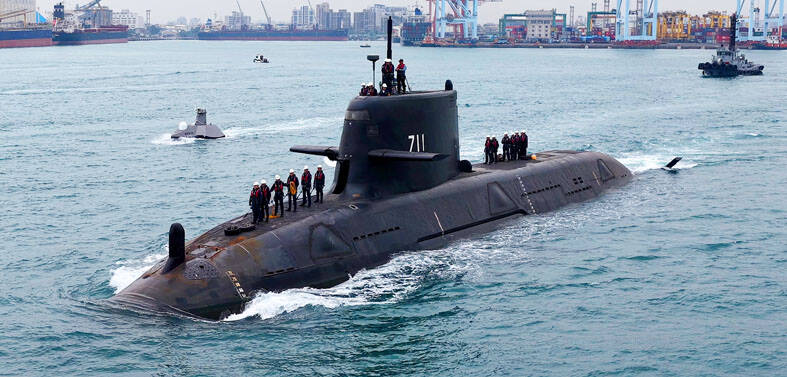A 10-year-old Mongolian girl named Enkhmend, who suffered from a malignant germ cell tumor of the brain and was unable to be treated in her country, is, after surgery at Taipei Veterans General Hospital, showing signs of recovery and can even walk on her own, the hospital said.
Chen Hsin-hong (陳信宏), a physician at the hospital’s Division of Pediatric Neurosurgery who performed the surgery, said Enkhmend was transferred to the hospital in July last year because she suffered from headaches, drowsiness and unconsciousness, and was diagnosed with a malignant germ cell tumor about the size of an egg in her brain.
When Enkhmend arrived at the hospital, she was unconscious and the team performed a 10-hour craniotomy — the surgical removal of part of the bone from the skull to expose the brain — to remove the tumor.
Chen said Enkhmend recovered and returned to Mongolia.
However, last month she was admitted to the hospital again due to meningitis. She was treated with antibiotics, had surgery to treat hydrocephalus and was discharged from the hospital last week.
Yesterday at the hospital, Enkhmend’s mother said they are grateful for what the hospital and Taiwan have done to help them.
Malignant germ cell tumors of the brain more commonly occur in children and the prevalence in Taiwan is about five times of that in Western nations, Chen said, adding that symptoms include headaches, unconsciousness, diabetes insipidus, blurred vision and weak limbs.

SHIPS, TRAINS AND AUTOMOBILES: The ministry has announced changes to varied transportation industries taking effect soon, with a number of effects for passengers Beginning next month, the post office is canceling signature upon delivery and written inquiry services for international registered small packets in accordance with the new policy of the Universal Postal Union, the Ministry of Transportation and Communications said yesterday. The new policy does not apply to packets that are to be delivered to China, the ministry said. Senders of international registered small packets would receive a NT$10 rebate on postage if the packets are sent from Jan. 1 to March 31, it added. The ministry said that three other policies are also scheduled to take effect next month. International cruise ship operators

NUMBERS IMBALANCE: More than 4 million Taiwanese have visited China this year, while only about half a million Chinese have visited here Beijing has yet to respond to Taiwan’s requests for negotiation over matters related to the recovery of cross-strait tourism, the Tourism Administration said yesterday. Taiwan’s tourism authority issued the statement after Chinese-language daily the China Times reported yesterday that the government’s policy of banning group tours to China does not stop Taiwanese from visiting the country. As of October, more than 4.2 million had traveled to China this year, exceeding last year. Beijing estimated the number of Taiwanese tourists in China could reach 4.5 million this year. By contrast, only 500,000 Chinese tourists are expected in Taiwan, the report said. The report

Temperatures are forecast to drop steadily as a continental cold air mass moves across Taiwan, with some areas also likely to see heavy rainfall, the Central Weather Administration (CWA) said. From today through early tomorrow, a cold air mass would keep temperatures low across central and northern Taiwan, and the eastern half of Taiwan proper, with isolated brief showers forecast along Keelung’s north coast, Taipei and New Taipei City’s mountainous areas and eastern Taiwan, it said. Lows of 11°C to 15°C are forecast in central and northern Taiwan, Yilan County, and the outlying Kinmen and Lienchiang (Matsu) counties, and 14°C to 17°C

STEERING FAILURE: The first boat of its class is experiencing teething issues as it readies for acceptance by the navy, according to a recent story about rudder failure The Hai Kun (海鯤), the nation’s first locally built submarine, allegedly suffered a total failure of stern hydraulic systems during the second round of sea acceptance trials on June 26, and sailors were forced to manually operate the X-rudder to turn the submarine and return to port, news Web site Mirror Daily reported yesterday. The report said that tugboats following the Hai Kun assisted the submarine in avoiding collisions with other ships due to the X-rudder malfunctioning. At the time of the report, the submarine had completed its trials and was scheduled to begin diving and surfacing tests in shallow areas. The X-rudder,